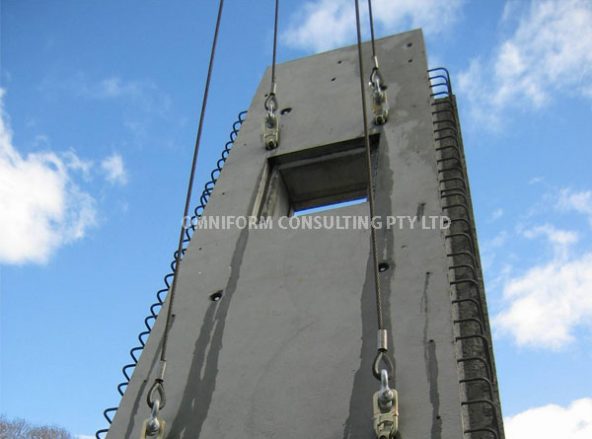Precast Propping Engineers: Omniform’s Role in Efficient and Safe Construction
12 July 2024
Unlock the advantages of precast concrete construction with Omniform’s precast propping engineers in Australia. Learn how we ensure efficient and safe projects.
Precast Propping Engineers are essential in modern Australian construction, ensuring the safe and efficient installation of precast concrete elements. These specialised professionals at Omniform leverage our expertise to design and implement robust temporary support systems, minimising risks and optimising project timelines. By utilising advanced propping techniques,
Precast Propping Engineers contribute to the structural integrity of buildings during critical assembly phases. Omniform’s team of skilled Precast Propping Engineers stands at the forefront of the industry, delivering innovative solutions that enhance construction safety and productivity.
The Role of Precast Propping Engineers
Precast propping engineers are responsible for designing and implementing temporary support systems for precast concrete structures. These systems are essential for maintaining the structural integrity of buildings during construction, particularly during the placement of precast concrete panels. The engineers must carefully plan and execute the installation of these systems to ensure that the structure remains stable and secure throughout the construction process.
Understanding Precast Concrete and Its Advantages
Precast concrete offers a multitude of benefits for construction projects:
• Faster Construction: Precast elements are manufactured off-site in a controlled environment, allowing for faster on-site assembly and reduced construction times.
• Enhanced Quality: Precast concrete benefits from controlled curing conditions, leading to consistent quality and reduced risk of defects.
• Improved Safety: Off-site fabrication minimises on-site hazards associated with traditional concrete pouring.
• Reduced Costs: Faster construction translates to lower labour costs and improved project efficiency.
The Critical Role of Precast Propping Engineers
Precast propping engineers play a vital role in ensuring the safe and efficient use of precast concrete elements. Their responsibilities encompass:
Structural Design: Precast propping engineers design temporary support structures, or props, that safely hold precast elements in place during construction until they become structurally integrated with the building.
Load Calculations: They meticulously calculate the weight loads that the props will need to bear, ensuring the temporary structures can withstand the weight of the precast elements throughout the construction process.
Shop Drawing Review: Precast propping engineers review shop drawings for precast elements, verifying their compatibility with the designed temporary support structures.
Site Supervision: They may also provide on-site supervision during the erection process, ensuring proper installation and adherence to safety protocols.
Omniform’s Expertise in Precast Propping
Omniform, with its extensive experience in temporary works, has developed a comprehensive range of solutions for precast propping. The company’s team of expert engineers uses advanced software and simulation tools to design and optimise temporary support systems that meet the specific requirements of each project. This ensures that the structures are built efficiently and safely, minimising the risk of accidents or damage.
Building a Successful Future with Precast Propping Expertise
Precast concrete, when combined with expert precast propping engineering, offers a reliable and efficient construction method. At Omniform, we are committed to providing our clients with the expertise and support they need to achieve successful and safe construction projects. By leveraging the company’s advanced software and simulation tools, construction projects can be completed efficiently and safely, minimising the risk of accidents and damage.

